picture: Steffen Scholz
OUR CURRENT PROJECTS
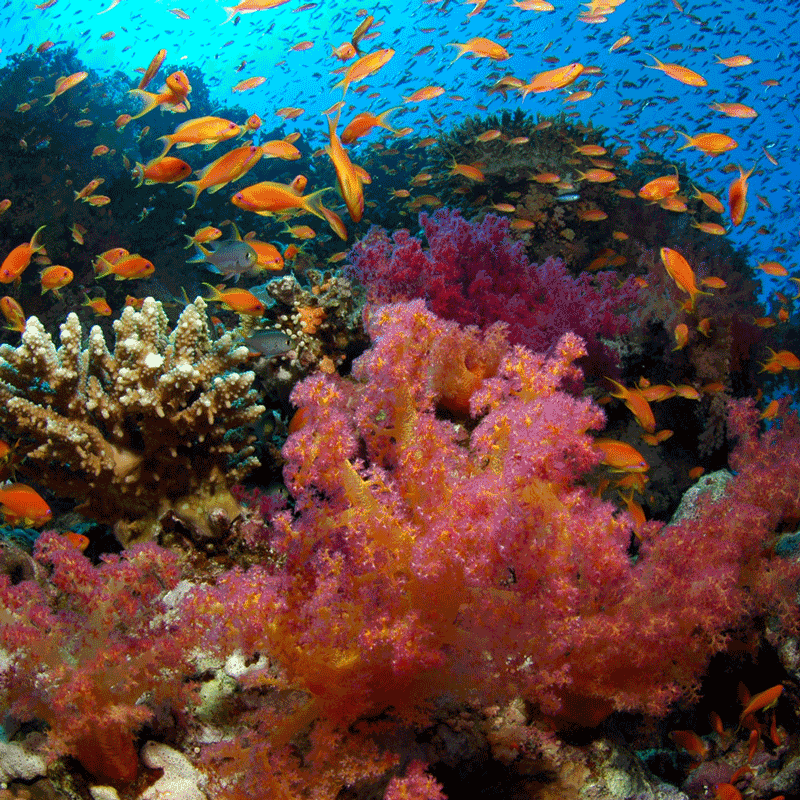
picture: Martina & Herbert Bauder
Biodiversity in the Red Sea
Inventory of Fish on the Reefs
A look through the diving mask impressively reveals how extraordinarily rich in species the Red Sea is in terms of fish. Since the first scientific investigations in the 19th century, more than 1,200 fish species have been recorded here. The Gulf of Aqaba is particularly species-rich, with around 800 known species, while approximately 400 species have been described from the Gulf of Suez. However, this number is likely significantly lower than the actual diversity: several fish species from the Red Sea that have migrated into the Mediterranean via the Suez Canal very likely also occur in the Gulf of Suez, but they have not yet been systematically recorded there. Since 2010, nearly 100 fish species have additionally been newly discovered and scientifically described – an impressive testament to the fact that the Red Sea still holds many surprises today.
Another remarkable feature of the Red Sea fish fauna is the high proportion of endemic species: around 200 fish species are found exclusively here in the world. One of the best-known representatives is the Red Sea anemonefish (Amphiprion bicinctus). At the same time, only a few reefs have been thoroughly studied so far, and we often still do not know how many fish species actually live at each location. This knowledge is of great importance, especially because climate change is already having an impact: some fish species are disappearing, while others are newly immigrating into the Red Sea. For this reason, we have been recording the diversity of reef fish for some time – both together with recreational divers through citizen science projects and in scientific projects and excursions.
These efforts are supported by Orca Dive Clubs, The Breakers Diving and Surfing Lodge, and Divevolk.
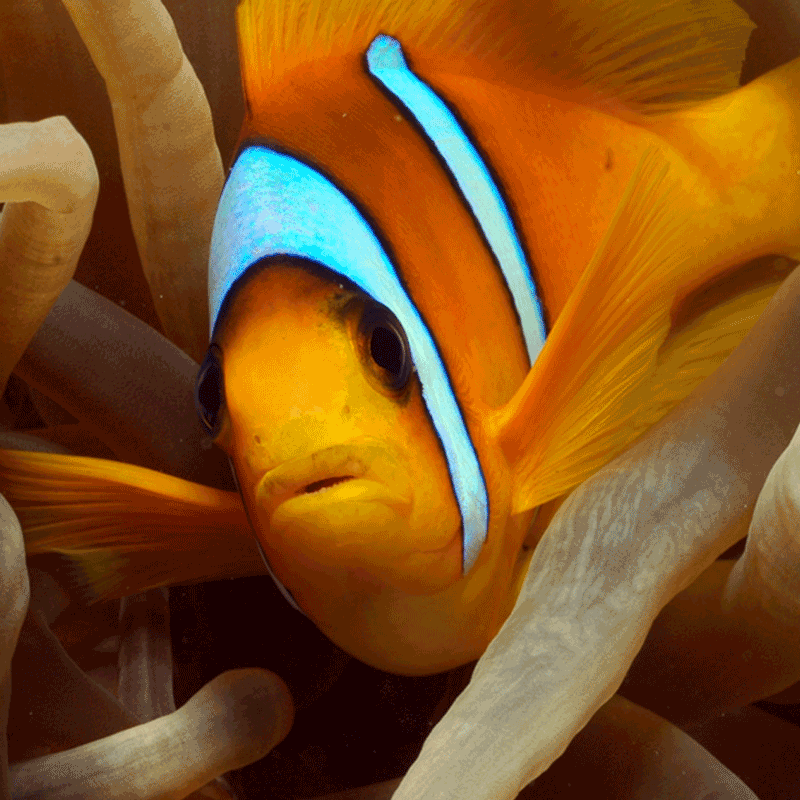
picture: Martina & Herbert Bauder
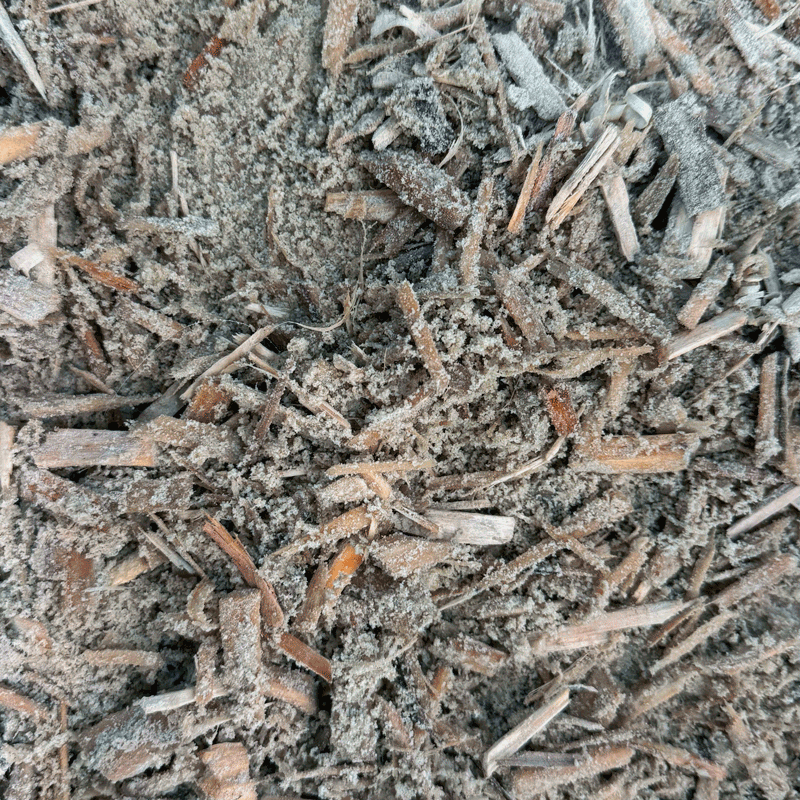
picture: Ralph Schill
Sustainable Aggregates in Riding Surfaces
Research and Practical Recommendations for Biological Materials
Depending on the type of equestrian discipline practiced—whether dressage, show jumping, vaulting, or another discipline—the requirements for a riding arena and the technical structure of its surface vary considerably. The top layer (footing) usually consists of riding sand mixed with various additives. These may include biological materials such as cotton, hemp, wood, jute, sheep’s wool, or sisal, as well as semi-synthetic substances like compostable cellulose or petroleum-based, non-biodegradable plastics. In some cases, the top layer may even be composed entirely of synthetic materials, such as in the case of fully textile arenas.
So far, scientific studies on the behavior of biological additives with respect to durability, water retention, and evaporation properties in riding surfaces are lacking. This study addresses precisely this gap: it aims to examine how the biological additives wood and jute perform in practice over longer periods of time. The goal is to develop well-founded recommendations for sustainable riding arena construction. The innovative aspect of the project lies in its systematic analysis of biological additives, which have so far received little research attention. Through field studies, reliable data on functionality and durability will be collected for the first time, enabling a more environmentally friendly design of riding surfaces.
The project is funded by the Ministry of the Environment, Climate Protection and the Energy Sector of Baden-Württemberg with resources from the Glücksspirale lottery.
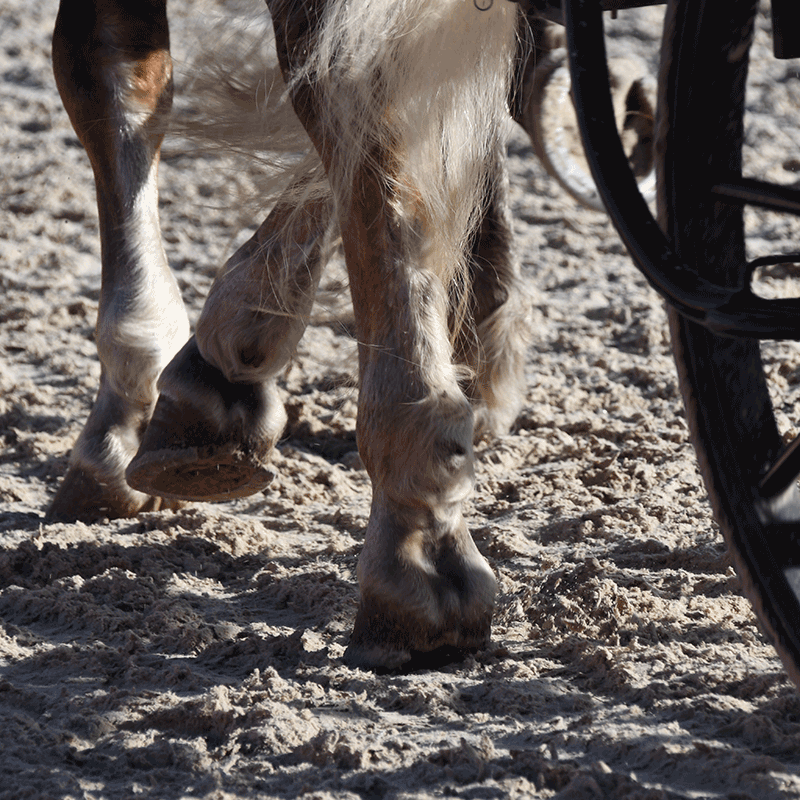
picture: Franz Brümmer

picture: Stephanie Naglschmid
ReefExplorer
Your Online Lecture Series 2025
Coral reefs are among the most biodiverse habitats on Earth, captivating both recreational divers and scientists alike. Their vast diversity remains far from fully explored, with new species and behaviors being discovered by researchers each year—evidence of the extraordinary complexity of these ecosystems. Amid vibrant colors and teeming life, many inhabitants remain hidden until observed closely. As hotspots of biodiversity, coral reefs provide a home for a quarter of all marine species, protect coastlines, regulate the climate, and support the livelihoods of millions of people.
A dive into this world reveals not only its beauty but also raises awareness of the need for its protection. Sustainable diving and sharing experiences help emphasize the importance of these endangered habitats. Coral reefs are more than just diving destinations—they are unique treasures of nature that must be preserved. The free (German-language) ReefExplorer online lecture series by aquatil offers exciting insights into these ecosystems. Each month, scientists present talks on topics such as dazzling nudibranchs, fascinating crabs, or colorful fish. The series is supported by over 40 partners dedicated to the protection of coral reefs. Join us in uncovering the secrets of coral reefs at www.reefexplorer.org.
The lecture series is supported by Blancpain and over 40 partners dedicated to the protection of coral reefs.

picture: Herbert Frei

picture: Tiziana Spezzano
American Bullfrogs in Baden-Württemberg
Study on Migration and Overwintering Behavior
Invasive species are a global threat to native biodiversity and a primary cause of species extinction. The American bullfrog (Lithobates catesbeianus Shaw, 1802) is considered an invasive species in 40 countries. It has been named one of the 100 most dangerous invasive species by the International Union for Conservation of Nature (IUCN), due to its invasive traits and ecological impact. Since about 1996, the bullfrog has been observed along the northern Upper Rhine, and by the summer of 2001, it was confirmed in various water bodies. These include a network of water bodies such as gravel pits, oxbows, and ponds along the Rhine in the northern Rhine valley in the NATURA 2000 area from Karlsruhe to Philippsburg. Since 2023, occurrences of the bullfrog in neighboring Rhineland-Palatinate have also been recorded.
In recent years, various measures have been implemented to contain the bullfrog population and prevent further spread. These measures include not only the removal of adult frogs but also the coordinated and authorized capture of tadpoles by divers. Our project “American Bullfrog Control in Baden-Württemberg” aims to develop more effective control strategies based on a deeper understanding of the ecology and overwintering behavior of bullfrogs. It also tests innovative approaches to the targeted removal of adult frogs using species detection dogs, which have been successfully used at other locations for the detection of amphibians. This project contributes to practical solutions in the fight against the spread of this invasive species through research and testing.
Supported by the Stiftung Naturschutzfonds, funded from dedicated proceeds of the Glückspirale lottery.

picture: Annegret Grimm-Seyfarth

picture: Ralph Schill
For the Game of Tomorrow
Practical Workshop on Artificial Turf Fields
Issues such as microplastics, environmental protection, biodiversity loss, and resource consumption are increasingly gaining public attention. These challenges also reach the world of sports, especially football, where artificial turf fields significantly contribute to the year-round execution of sports activities. However, they cause uncertainties among football clubs and municipalities regarding knowledge, understanding, and management, particularly due to microplastic emissions. Many involved in the clubs are aware of the topic’s relevance but lack comprehensive means to educate themselves about artificial turf, infill materials, underlying elastic layers, maintenance practices, and biodiversity enhancement measures.
The goal of the one-day conference “For the Game of Tomorrow – Practical Workshop on Artificial Turf Fields” on October 10, 2024, in the small Württemberg Lounge of the MHP Arena Stuttgart, is to provide concrete tips and support for planning, operating, and using synthetic turf systems. The focus is on maintaining these fields and strategies to minimize or prevent microplastic emissions. The event aims to impart practical knowledge and raise awareness of the issue, not to present the latest scientific findings. The free conference is aimed at clubs and authorities and offers expert lectures as well as discussion and networking opportunities with professionals from consulting, planning, manufacturing, maintenance, and decommissioning of artificial turf fields. Here is the link to register for the event.
The conference is supported by the Ministry of the Environment, Climate Protection, and the Energy Sector Baden-Württemberg with funds from the lottery Glücksspirale.

picture: Franz Brümmer
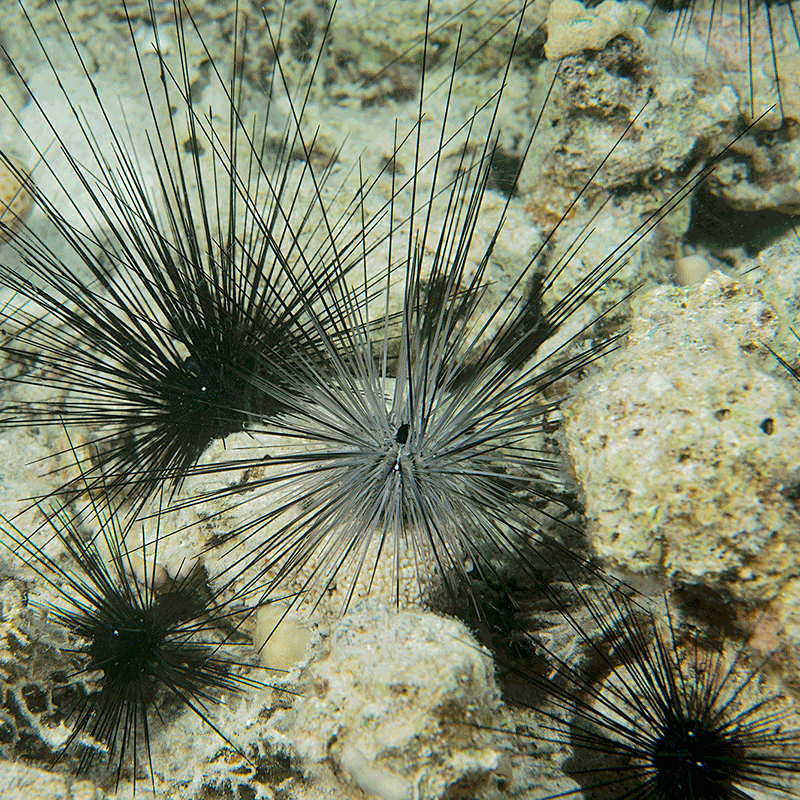
picture: Oliver Meckes
Dive4Diadema – Citizen Science Underwater
Searching for the last of their kind the diadem sea urchins in the Mediterranean and Red Sea
Sea urchins are one of the most important animal groups in the coral reefs of the Red Sea. They feed on algae and are therefore the “lawnmowers” of the reefs. They contain the spread of algae and thus create space for the settlement of beneficial larvae and slower-growing organisms, such as corals, mussels and Repeated mass mortality events in the Caribbean species Diadema antillarum peaked in the early 1980s due to a waterborne pathogen. In the Caribbean, 98 % of all diadem sea urchins disappeared at that time. The survivors have slowly recovered in recent years, but by 2022, the population crashed again when about 95 % of all sea urchins died.
Dead and dying Diadema setosum sea urchins were observed off the port of Kastellorizo in Greece for the first time in July 2022. The situation now is a mass mortality event, spreading at great speed from the Mediterranean into the Red Sea from where the Diadema sea urchins originated. For this reason, we have launched the Citizen Science Project Dive4Diadema. All recreational divers are encouraged to report their observations seen during their dives with the free, multilingual app for iPhone, iPad and Android smartphones and tablets. Dive4Diadema is a joint effort of dive centres, tour operators, training organizations and scientific institutions. Join www.Dive4Diadema.org
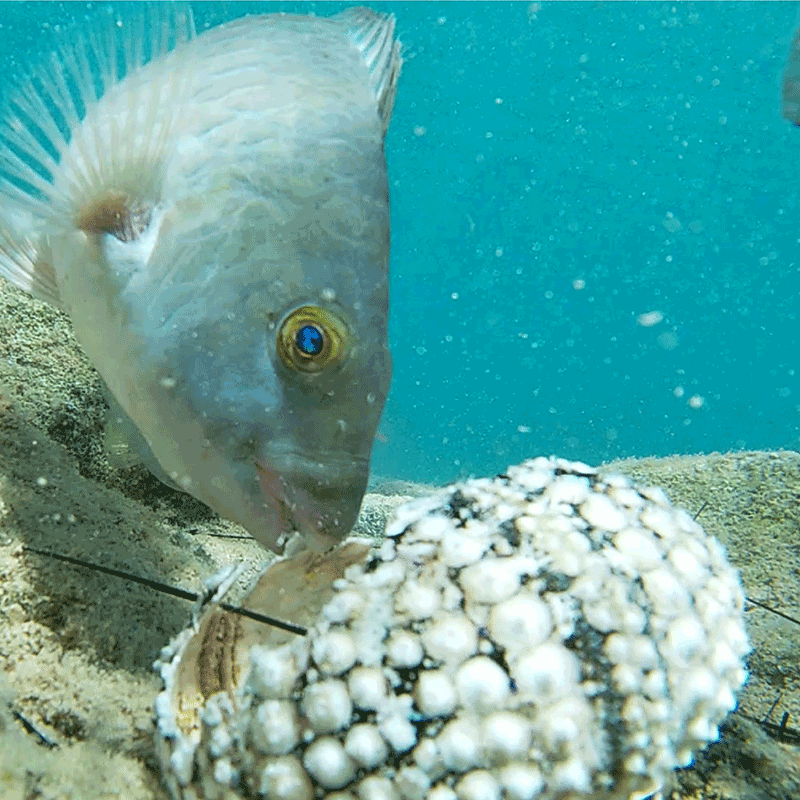
picture: Bardanis Emmanouil
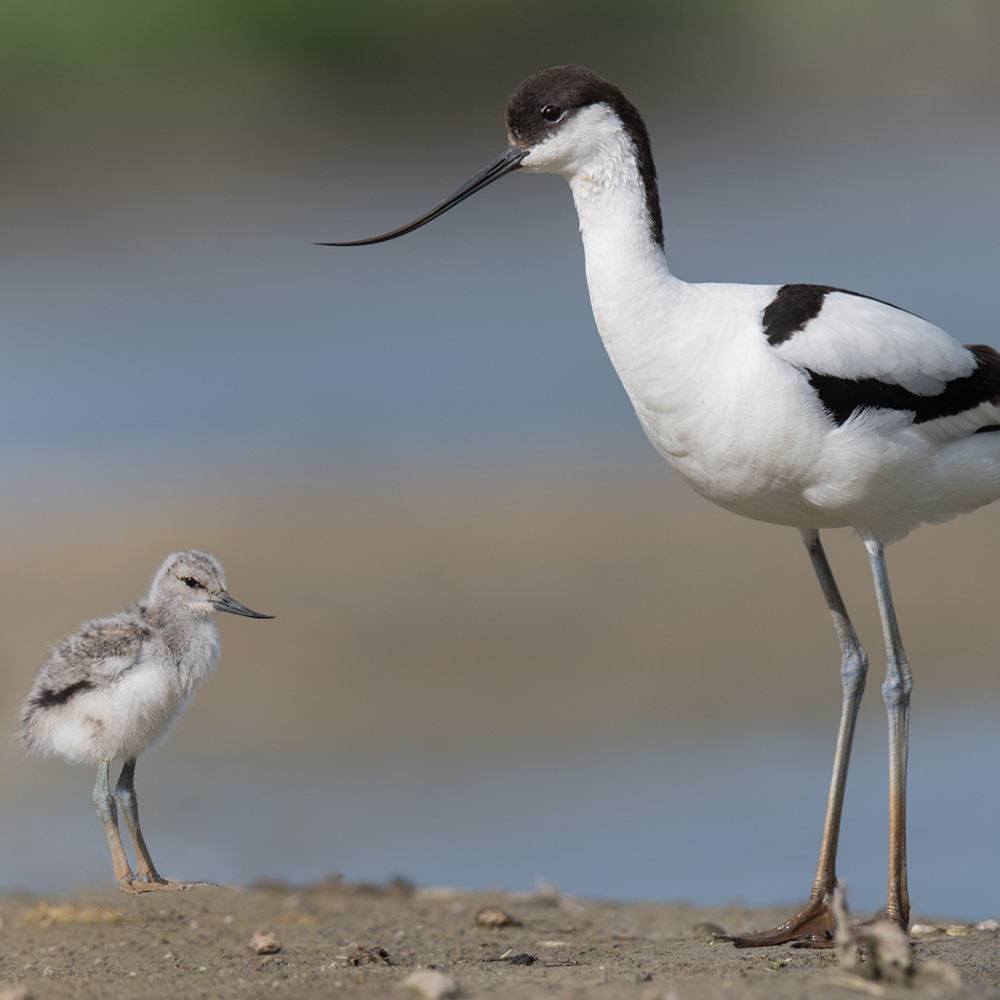
picture: Peter Hering
Bird Islands
Rantum Basin Nature Reserve on the Island of Sylt
The UNESCO World Heritage Wadden Sea is one of the largest wetlands in the world and a unique ecosystem with a very high species diversity. Especially the Rantum Basin on Sylt, now one of the most species-rich bird sanctuaries in northern Germany, has a very important international significance for migratory birds as a resting, breeding and wintering area on their way between the Arctic and southern Africa.
For the first time, Blancpain is involved in a German nature conservation project as part of the Blancpain Ocean Commitment. During the migration periods in spring and autumn, up to 10,000 birds such as Dunlin and Knot, Bar-tailed Godwit and Little Ringed Plover can be observed at the same time in the Rantum Basin. Many migratory bird species also breed here, such as terns, avocets, bluethroats, reed warblers, avocets, eiders, black-headed gulls, common and Arctic terns.
In this nature reserve, aquatil and the Jordsand Association are jointly constructing artificial islands as protected breeding and resting places for birds. A total area of 1,600 m² is to be created by pushing up the existing material, which will also be important resting places for the migratory birds of the Wadden Sea during the rest of the year. The focus here is on supporting shorebirds such as terns, gulls and waders, which only breed in small numbers on Sylt in particular. The strong pressure from predators such as the fox and the raccoon dog is seen as a main reason for the absence of ground-nesting seabird species on Sylt. The project includes not only the construction of resting and breeding sites, but also the erection of a viewing platform from which interested people can observe the many bird species breeding and resting. Together with Blancpain, we are creating a safe space for migratory birds and more knowledge about their protection and the importance of the Wadden Sea.
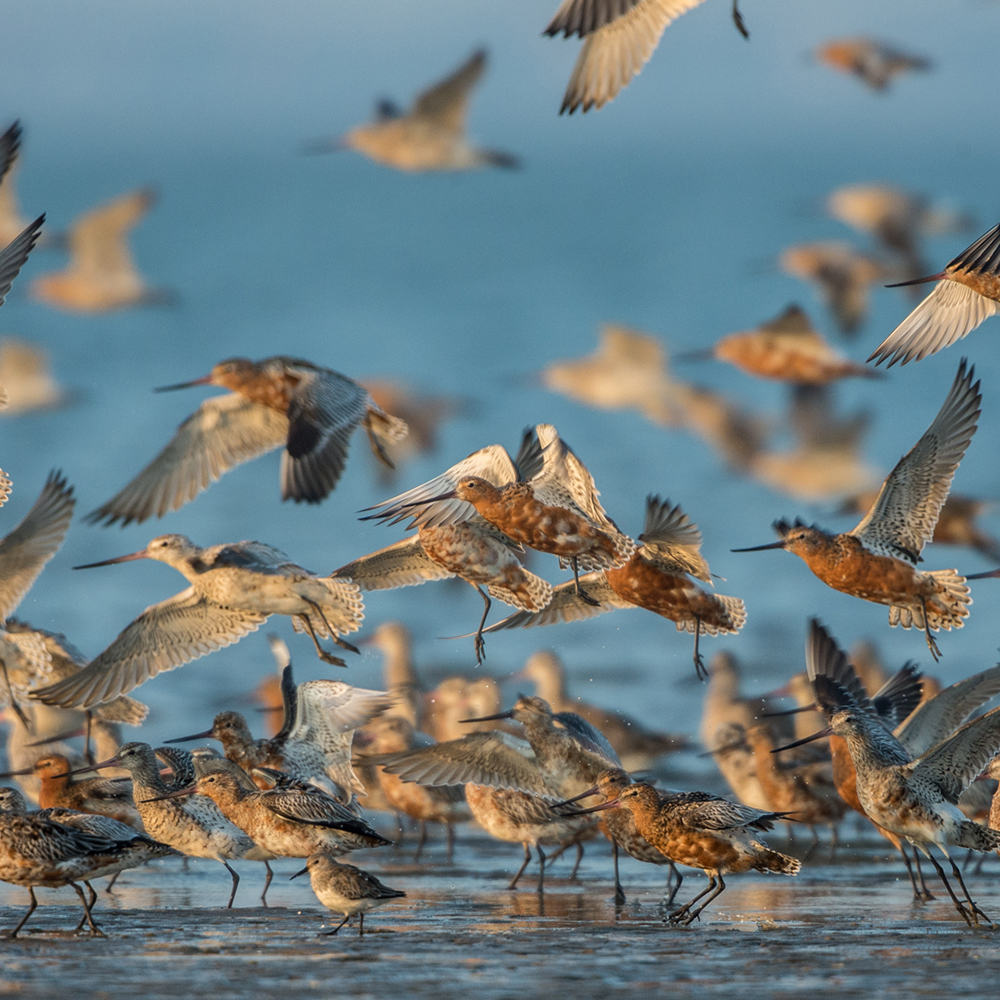
picture: Peter Hering

picture: DFB
DFB Online Seminar & Recommendations for Action
Microplastic discharge from existing synthetic turf pitches
aquatil and the German Football Association (DFB), with its five regional associations North, West, South, Southwest and Northeast and 21 state associations, offer the opportunity to further educate themselves on the topic of “microplastic discharge from existing synthetic turf pitches” with concrete information, explanations and practical tips on dealing with synthetic turf systems. The topics of microplastics as well as environmental protection, biodiversity loss and resource consumption are becoming increasingly important in the public’s awareness. Since many sports have a negative impact on the environment and nature, these topics have also become important in sports. Especially the microplastics discharge from sports facilities with synthetic turf creates uncertainties in knowledge, understanding and handling for football clubs and municipalities.
The online seminar helps to objectify the discussion about synthetic turf systems. Experts from the DFB and aquatil provide assistance and practical tips to operators and users of existing synthetic turf systems, especially those with synthetic granulate as a filler. These should help to ensure that as little as possible, and in the best case no microplastics are discharged from the pitch into the environment. With this seminar, we would like to address all football clubs and municipalities or the responsible persons who plan, use and maintain sports fields in order to provide them with the knowledge about microplastic discharge on synthetic turf fields, but also to answer their practical questions on a local level with our experts.
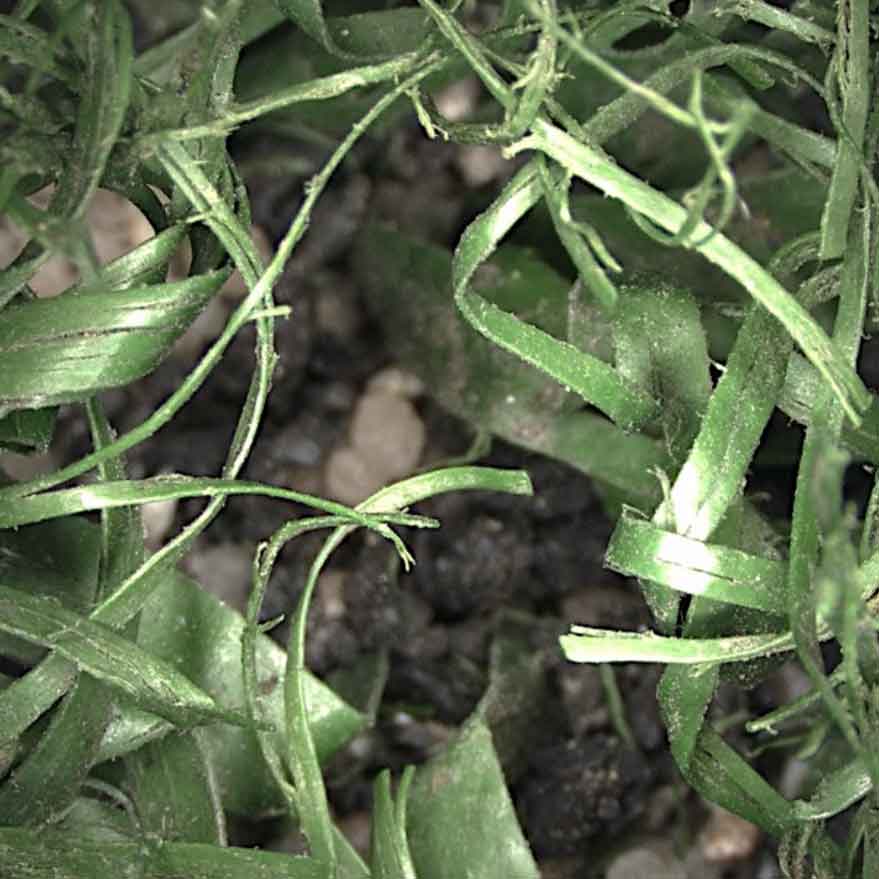
picture: Franz Brümmer

picture: Kambeck, janefire.de
App
LakeExplorer – Citizen Science goes diving
About 400,000 divers in Germany explore the local inland waters with great interest and often with great biological knowledge. As Citizen Scientists, they will in the future be able to use LakeExplorer to inform themselves digitally and even more easily than before about the native plants and animals of the limnic habitats and in turn support science with their findings.
Aquatic plants, fish, pond insects – in contrast to terrestrial organisms, organisms of limnic habitats remain hidden from many people and are often less studied. So it makes sense to provide recreational divers interested in nature with suitable information and identification aids for use underwater and to ask them for their support in scientific work: Citizen Science in the mountain or quarry pond.
The Citizen Scientists learn about the identification processes and species groups via an online platform and acquire concrete species knowledge about the local flora and fauna. Once they are able to independently identify the observed species using the identification key, they can report their observations to a database. There, they are checked using a validation system. In this way, the Citizen Scientists can provide biologically correct and technically evaluable data, for example, also on introduced species such as water plague, freshwater jellyfish, bullfrog and calico crayfish. The project of the nature conservation society Schutzstation Wattenmeer e.V. is funded by the Federal Agency for Nature Conservation (BfN) with funds from the Federal Ministry for the Environment, Nature Conservation and Nuclear Safety and BINGO! project funding and supported by aquatil.
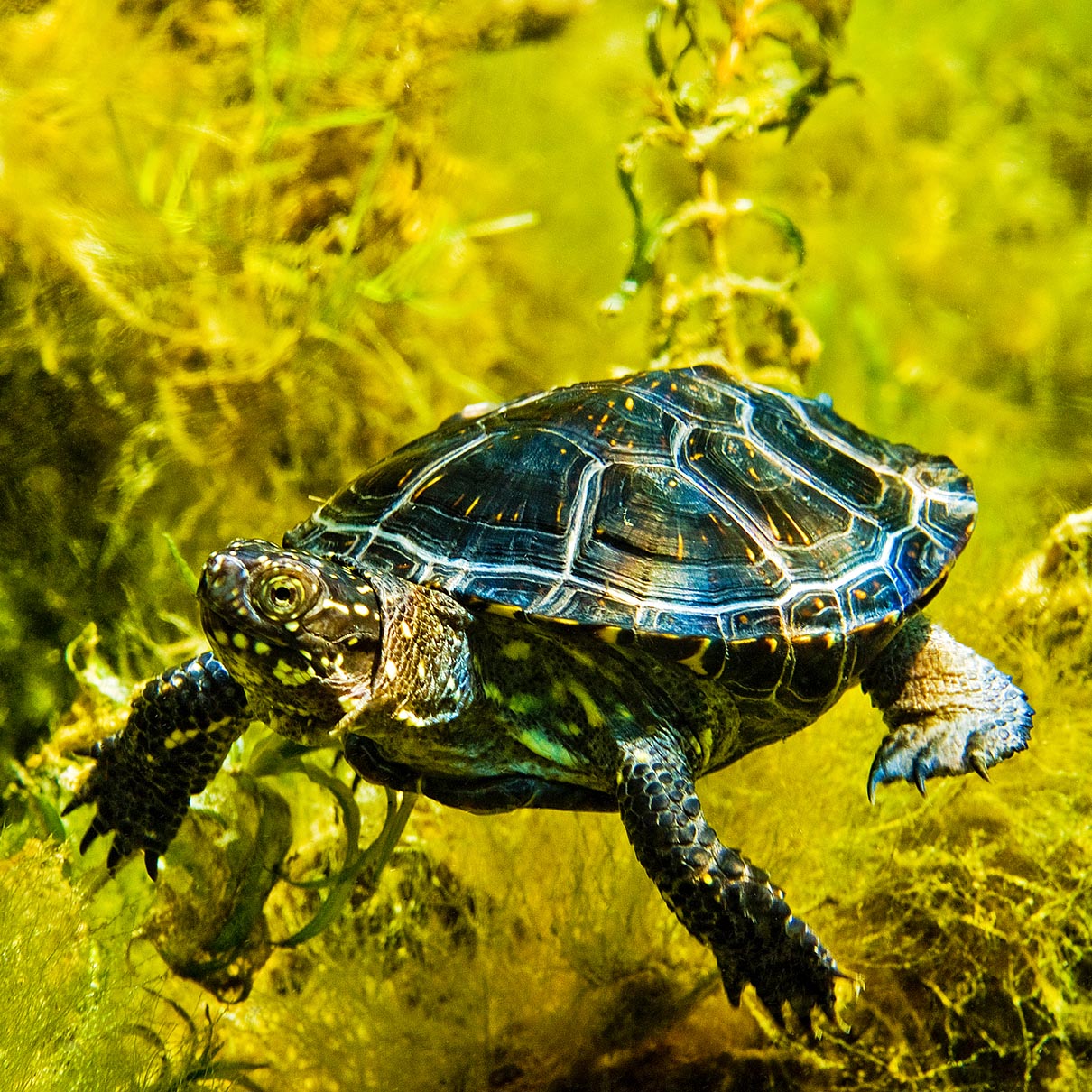
picture: Herbert Frei

picture: Ralph Schill
Sustainability project
Waters.Knowledge.Future
With the combination of a new digital and physical educational offer, recreational divers are to be sensitised to the topics of biodiversity, sustainability and climate change. The Corona pandemic has shown that many more dives are taking place in local waters. This means that there is also an increased demand for knowledge about these waters. The Württembergische Landesverband für Tauchsport (WLT) would like to use this opportunity to provide target group-specific information about sustainability as part of the training and further education activities. There are still enormous gaps in information about the 2030 Agenda, the Sustainable Development Goals (SDGs) and concrete sustainable action.
The aim is therefore to provide basic knowledge on the topics of sustainability, SDGs, climate change, N! charter sport in relation to water bodies and a sustainable diving sport. The Württembergische Landesverband für Tauchsport (WLT) has received the Sustainability Award of the Land Sport Association Baden-Württemberg 2020 for the project “Gewässer.Wissen.Zukunft” (Water.Knowledge.Future). The prize is funded by the Baden-Württemberg Ministry for the Environment, Climate and Energy Management. The project is supported by aquatil.
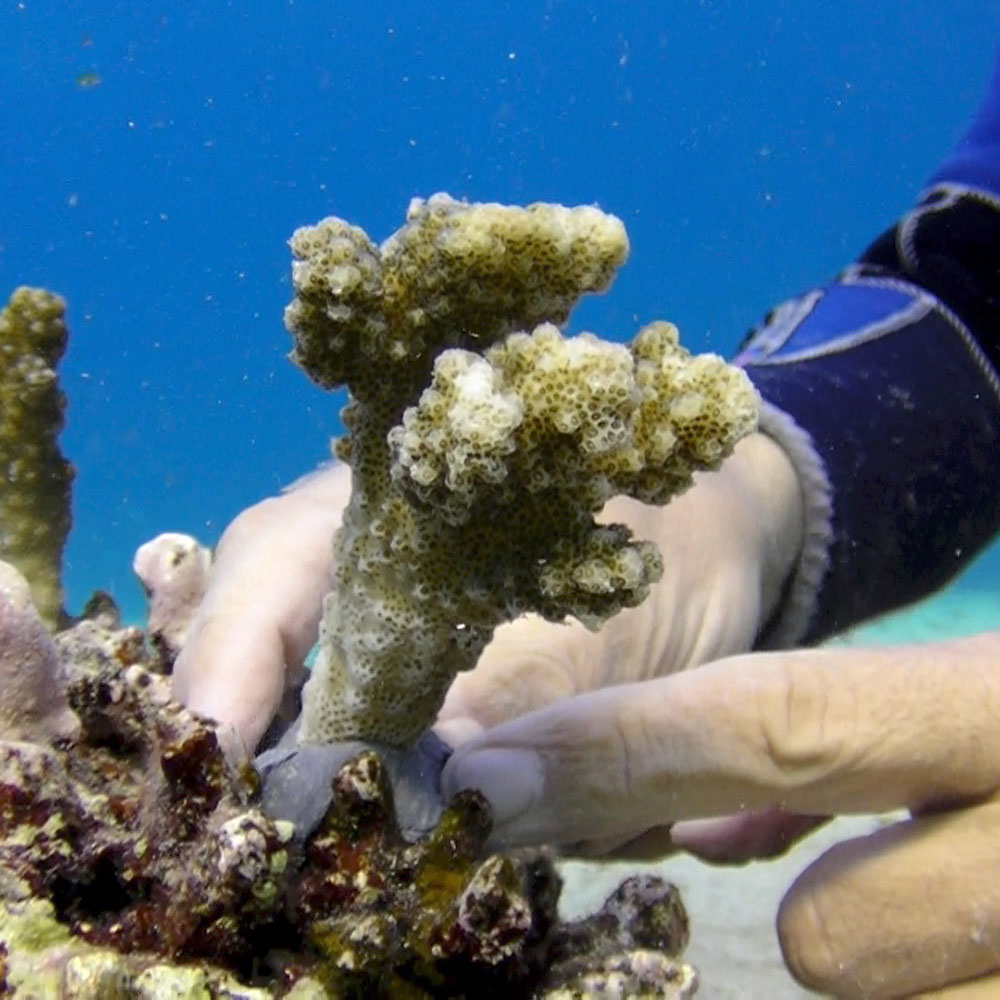
picture: Ralph Schill
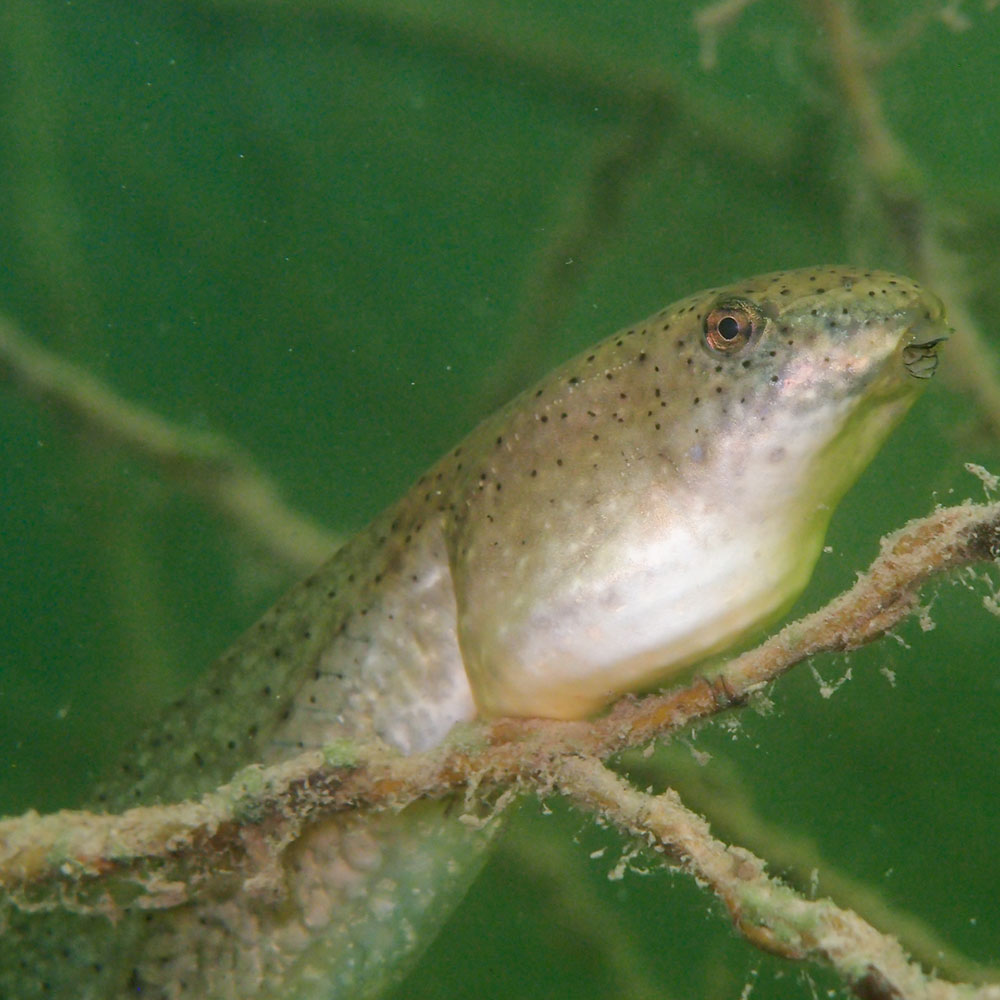
picture: Franz Brümmer
Monitoring project
Tadpoles in XXL
The bullfrog (Lithobates catesbeianus), originally from North America, is one of the world’s largest frogs. Its distribution as an alien and invasive species in Baden-Württemberg is currently still limited to individual water bodies in an area of about 1,500 hectares on the northern Upper Rhine. This area, known since 2001, is currently the only occurrence in Germany.
However, due to the numerous lakes and ponds in the immediate vicinity of the occurrences, a further spread can be assumed. Above all, the tadpoles, which are up to 18 centimetres in size, pose a massive threat to our biological diversity. This mainly affects native amphibians and insects (large dragonflies, swimming beetles and ground beetles), but also molluscs (nudibranchs and snails) as well as small mammals, birds and reptiles. The bullfrog is on the Union list (Regulation (EU) No 1143/2014), which provides for a tiered system of prevention, early detection and immediate removal, as well as management of already widespread invasive species.
Since 2012, observations of bullfrog tadpoles have been documented by photos and videos on scientific dives at any time of the year. The aim was to investigate questions about the migratory behaviour of the tadpoles to possible overwintering habitats, a possible interruption of metamorphosis due to overwintering and questions of exact identification.
In order to obtain more precise information on the movement patterns and migration behaviour of the tadpoles, a telemetry study was carried out. Radiotransmitters were non-invasively attached to the bullfrog tadpoles and thus the 2D position under water could be determined. This confirmed a previously unknown migratory behaviour to underwater hibernation sites.
Bullfrog larvae are able to overwinter and stop metamorphosis. A skeletochronological examination showed that the growth ring is present, which indicates that hibernation has occurred.
Information on the mouth field, the actual identification feature for the tadpoles, varies and thus consideration of the overall morphology is also necessary for species identification.
The work was supported by the Stiftung Landesbank Baden-Württemberg, among others.

picture: Ralph Schill
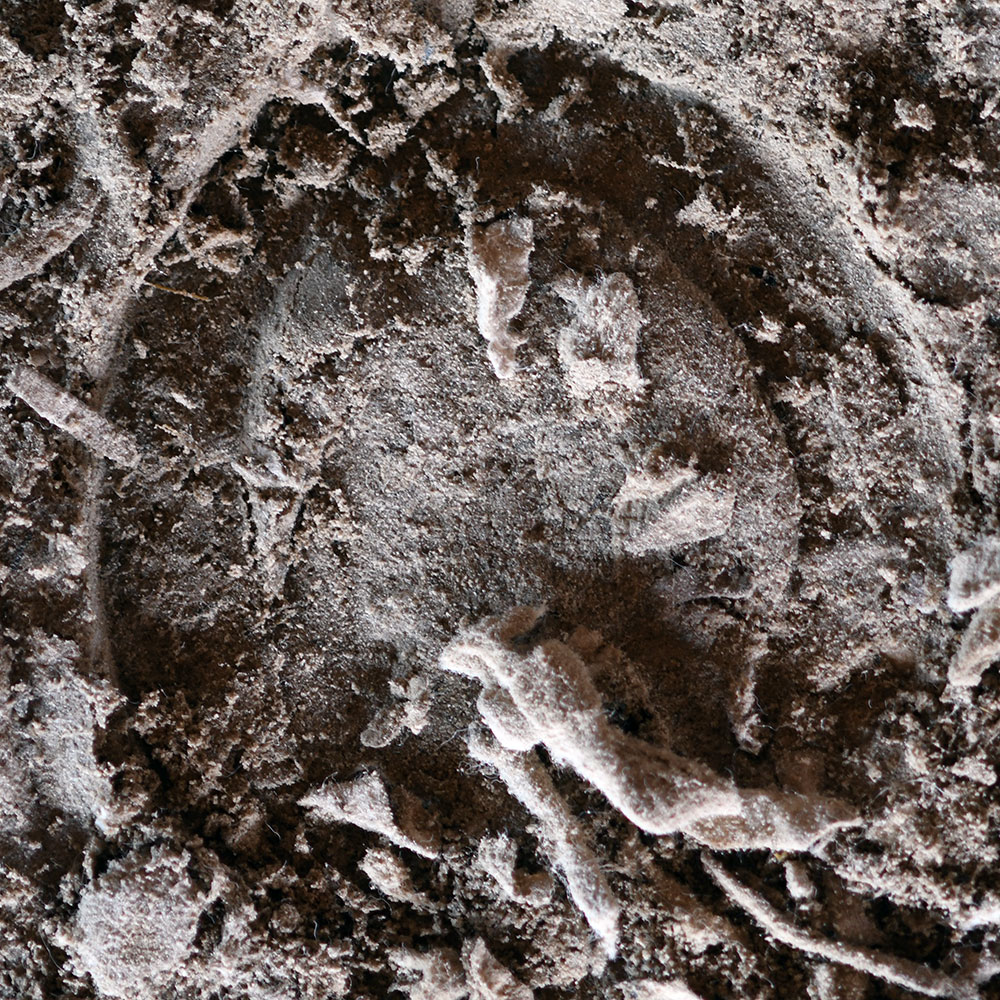
picture: Franz Brümmer
Riding arenas
Ecological footprint of synthetic aggregates
Riding arenas contain a footing layer as the top layer. To improve the riding properties, synthetic aggregates are increasingly being added. Among other things, carpet chips, geotextiles, fleece chippings or carpet punching residues from the automotive industry are used here. Through use and the associated footfall, these added materials are crushed, resulting in dust pollution and the appearance of microplastics. This, in turn, can be discharged from the riding arena and thus reach neighbouring surfaces or water bodies.
In the project, riding facilities with several riding arenas were examined in more detail. The composition of the material mixtures of the riding arenas was characterised and abrasion and comminution of the synthetic aggregates were analysed with microscopic analyses. The focus was also on the vertical displacement of secondary microplastics on the riding arenas and in the direct vicinity, as well as the discharge via rainwater into collection pits and adjacent bodies of water. Final report of the project.
The project was funded by the Ministry for the Environment, Climate and Energy Baden-Württemberg.
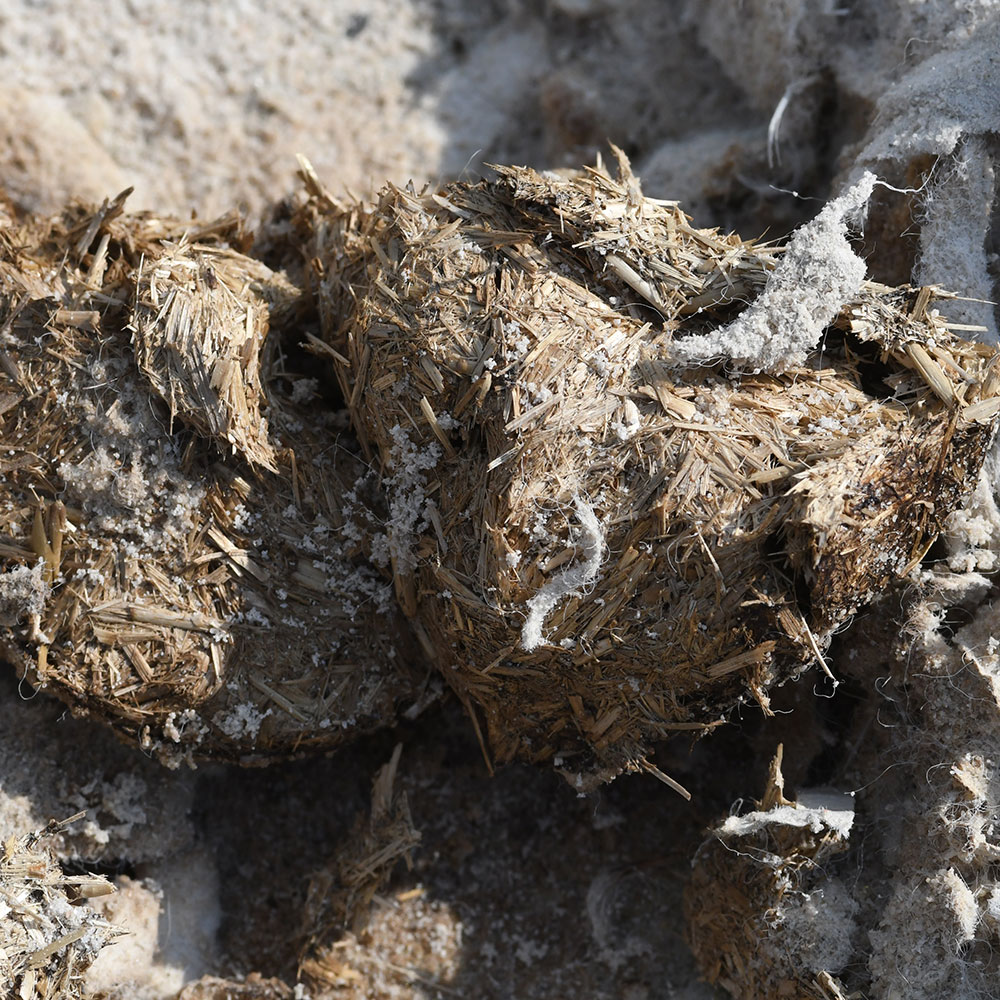
picture: Franz Brümmer
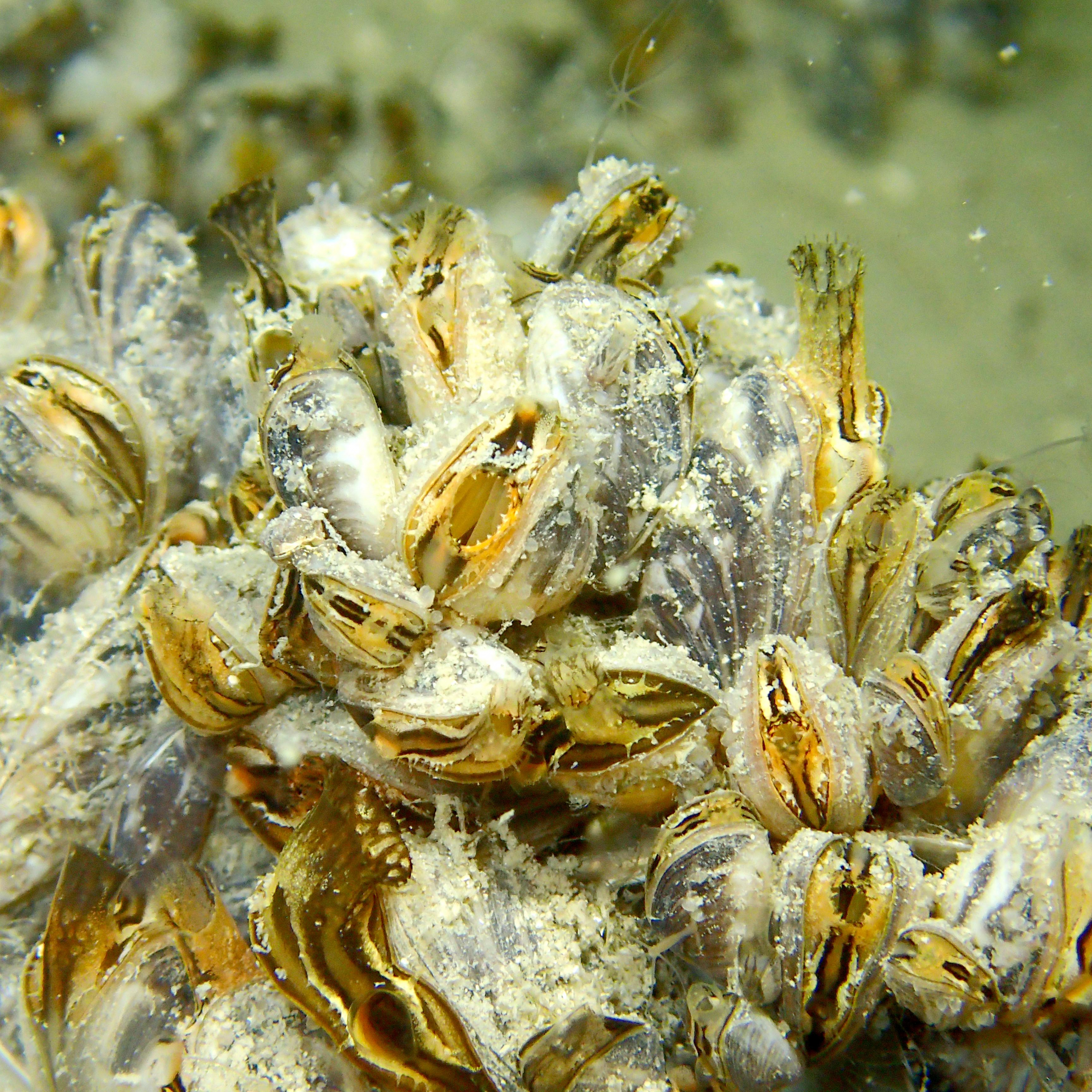
picture: Franz Brümmer
Monitoring project
Quagga – Migrated to stay
A particular challenge for species conservation in our waters is posed by new, invasive species (neobiota), which, for example as a result of human activities, enter habitats that are new to them, establish and spread rapidly, and cause demonstrable ecological damage. They are considered one of the main causes of biodiversity loss worldwide.
In spring 2016, specimens of the invasive quagga mussel (Dreissena rostriformis bugensis) were discovered for the first time by divers in Lake Constance (Überlinger See near Wallhausen). The quagga mussel originates from the area of the tributaries to the Black Sea (e.g. Dnepr-Bug-Liman) and reached our flowing waters via the shipping lanes. The first observation in Germany was in May 2007 in the Main River and subsequently it was also observed in several ports of the Upper Rhine. In the meantime, the quagga mussel can be found in the Rhine, the Main, the Müritz and the Neckar, but also in Lake Constance. The occurrence and spread of the mussel in the course of a river is most likely due to the drifting of larvae by the current. The quagga mussel generally prefers stagnant waters. This coincides not only with the occurrence in Lake Constance, but also with the fact that in the Main and Rhine mainly harbor areas were colonized.
The quagga mussel is a related species of the invasive zebra mussel (Dreissena polymorpha) already present in Lake Constance, which is also called the wandering mussel.
Only few data on the distribution of the quagga mussel, which recently migrated into Lake Constance, are known. A monitoring of the quagga mussel is being developed and implemented as a citizen science project of the WLT in close cooperation with the Scientific Diving Group of the University of Stuttgart (WiTUS). The data will be collected in cooperation with the diving clubs and their divers.
For this, the Württemberg Underwater Federation (WLT) received the 1st prize of the Sustainability Competition 2018 of the State Sports Association Baden-Württemberg and the Ministry of the Environment Baden-Württemberg.

picture: Derk Remmers
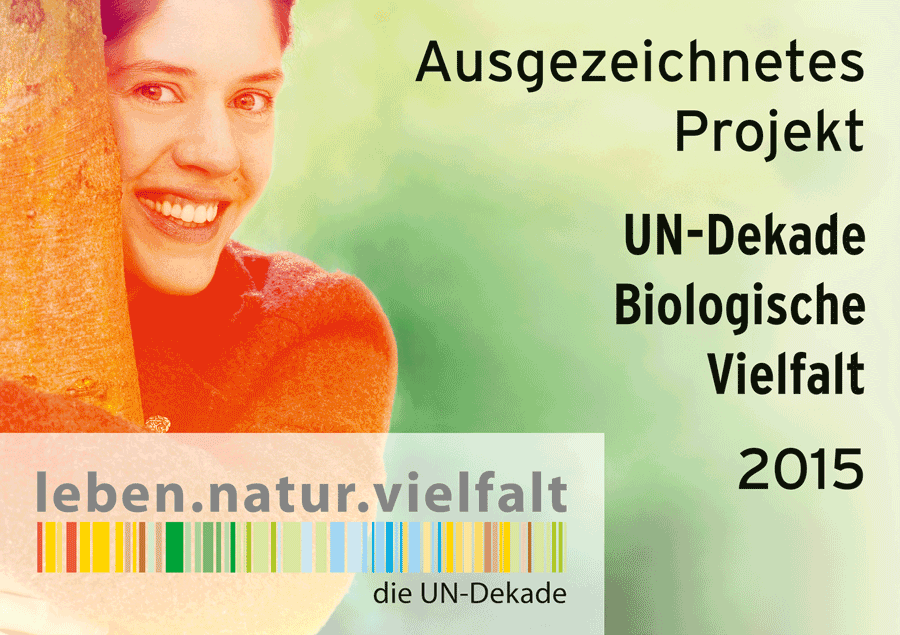
picture: UN-Dekade Biologische Vielfalt
Online platform
Neobiota – alien species
The project “Bringe Verborgenes zum Licht – Entdecke andere Arten!” (Bring the Hidden to Light – Discover Other Species!) of the German Underwater Federation (VDST) investigates the spread and influence of non-native organisms in German waters. These are affected by the spread of invasive species (neobiota) and the associated displacement of native species and alteration of habitats.
Some alien species cause no previously known ecological, economic or other damage. Others, however, threaten biodiversity in Germany and cause economic damage of several hundred million euros. In most cases, new species reach us completely unnoticed before they spread on a massive scale. For example, the freshwater jellyfish (Craspedacusta sowerbii) came to Germany from China with aquatic plants at the end of the 19th century. Already in the 1930s, there were reports of the jellyfish all over Europe and North America.
Marbled gobies (Proterorhinus semilunaris) or Danube floating shrimps (Limnomysis benedeni), on the other hand, originate from the coastal regions of the Black and Caspian Seas and have only come to us in recent years via the Danube and the Rhine-Main-Danube Canal or were distributed here via aquacultures.
The internet platform www.neobiota.info provides information on the spread of neobiota. Scuba divers and other interested parties can report their observations here. In this way, they make a valuable contribution to the conservation and protection of waters and biodiversity. The collected data is analysed by scientists and then presented in a distribution map. In 2015, it was awarded the title of Annual Project 2015 of the UN Decade of Biological Diversity by the Federal Ministry for the Environment, Nature Conservation, Building and Nuclear Safety (BMUB) at the 7th National Forum on Biological Diversity in Berlin.



